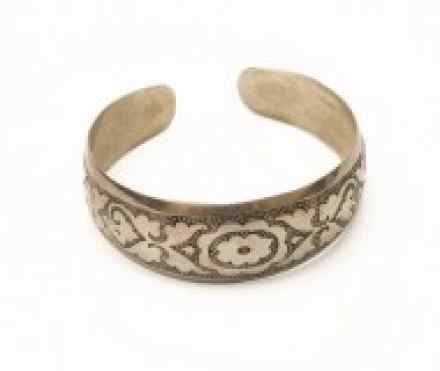
What is it?
Nickel allergy is one of the most common causes of allergic contact dermatitis — an itchy rash that appears when your skin touches a normally harmless substance.
Nickel allergy is commonly associated with earrings and jewelry for other body piercings. But nickel can be found in many everyday items — from coins to necklace clasps, from watchbands to eyeglass frames.
Nickel allergy can affect people of all ages. You may develop nickel allergy after a single exposure to nickel or after repeated or prolonged exposure. Treatments can reduce the symptoms of nickel allergy. Once you develop nickel allergy, however, you will always be sensitive to the metal and should avoid contact.
Symptoms
If you have nickel allergy, an allergic reaction usually begins within 12 to 48 hours after exposure to a nickel-containing item and may persist for two to four weeks. The features of contact dermatitis usually appear only where your skin came into contact with nickel, but they may appear elsewhere on your body. Signs and symptoms of contact dermatitis caused by a nickel allergy include:
- Rash or bumps on the skin
- Itching, which may be severe
- Redness or changes in skin colour
- Dry patches of skin that may resemble a burn
- Blisters and draining fluid in severe cases
Sweating at the point of contact with nickel may worsen the symptoms.
Causes
An allergic reaction is somewhat like a case of mistaken identity within your body's immune system. Normally, your immune system reacts to protect your body against bacteria, viruses or toxic substances.
If you have nickel allergy, your body reacts to nickel. In other words, it's mistakenly identified nickel as something that could harm you. Once your body has developed a reaction to a particular agent (allergen) — in this case, nickel — your immune system will always be sensitive to it. When you come into contact with nickel, your immune system responds and produces an inflammatory response.
Your immune system's sensitivity to nickel may develop after your first exposure or after repeated or prolonged exposure.
The cause of nickel allergy is unknown, but sensitivity to nickel may, in part, be inherited (genetic).
Sources of nickel exposure
Nickel allergy is most commonly associated with earrings and other jewelry for body piercings that contain some nickel. Common sources of nickel exposure include:
- Jewelry for body piercings
- Other jewelry, including rings, bracelets, necklaces and jewelry clasps
- Watchbands
- Clothing fasteners, such as zippers, snaps and bra hooks
- Belt buckles
- Suspender clips
- Hairpins
- Eyeglass frames
- Coins
- Kitchen utensils
- Paper clips
- Pens
- Keys
- Tools, such as hammers and screwdrivers
Risk factors
Because nickel is common in jewelry, nickel allergy is most often associated with earrings and other body-piercing jewelry that contain nickel. If the first jewelry you wear after a piercing contains nickel, your body is constantly exposed to the metal during the healing time. And most people who have piercings wear jewelry every day.
People who have regular exposure to nickel on the tops of their hands, feet or abdomen while doing "wet work" — as a result of either sweat or frequent contact with water — may be more likely to develop nickel allergy. This may include, for example, bartenders or people who work in certain food industries.
If other people in your family are sensitive to nickel, then you may have a greater risk of developing nickel allergy.
Diagnosis
Your doctor can usually diagnose nickel allergy based on your skin's appearance and your recent history of contact with items likely to contain nickel.
If the cause of your rash isn't apparent, however, your doctor may recommend a patch test (contact hypersensitivity allergy test). He or she may refer you to an allergy specialist (allergist) or skin specialists (dermatologist) for this test.
During a patch test, very small quantities of potential allergens (including nickel) are applied to small patches, which are then placed on your skin to check for a reaction. The patches remain on your skin for two days before being evaluated by your doctor. If you have a nickel allergy, the skin under the nickel patch will be inflamed when the patch is removed or in the days after removal of the patch.
Because of the low concentrations of allergens used, patch tests are safe even for people with severe allergies.
References
http://www.mayoclinic.org/diseases-conditions/nickel-allergy/basics/definition/con-20027616
http://www.healthline.com/health/allergies/nickel
http://www.webmd.com/allergies/guide/nickel-jewelry-allergy
https://www.allergyuk.org/skin-allergy/nickel-allergy


